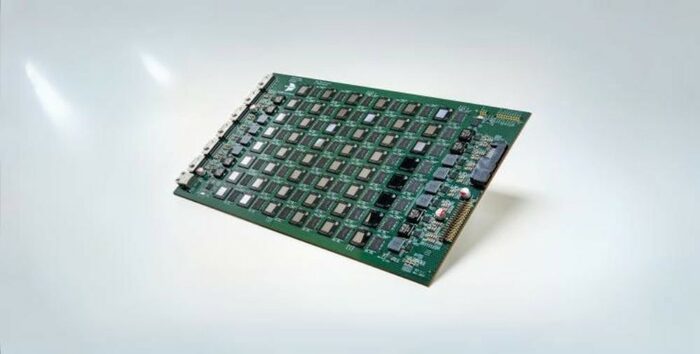|
Landeshauptstadt Dresden - www.dresden.de https://www.dresden.de/en/business/tomorrow-s-home/news/2024/013-spinnaker.php 24.06.2024 16:12:17 Uhr 22.04.2025 06:08:49 Uhr |
|
Dresden start-up launches supercomputer that mimics human thinking

Milestone for ‘SpiNNcloud Systems’: The Dresden-based DeepTech start-up has announced the commercial availability of its ‘SpiNNaker2’ platform. This is a high-performance AI computer that is based on the principles of the human brain and was developed in collaboration with TU Dresden, among other international partners. One of the first users of SpiNNaker2 will soon be the renowned Sandia National Laboratories, which is conducting research on behalf of the US Department of Energy.
SpiNNaker2 is the ‘world's largest and most energy-efficient supercomputer for artificial intelligence in real time’, explains Prof Christian Mayr from TU Dresden. Hector Gonzalez, Co-CEO of SpiNNcloud Systems, adds: ‘It was modelled on the human brain, which only needs 30 watts to perform the most complex tasks.’ Gonzalez is convinced: ‘The future of computing technology must be inspired by the brain.’
SpiNNaker2 was developed in collaboration with the University of Manchester as part of the European Flagship Human Brain Project. This is a multi-billion European Union research project to design intelligent and efficient artificial systems. SpiNNcloud Systems, a spin-off from Mayr's working group, received funding totalling 2.5 million euros from the European Innovation Council (EIC) for the project. Dresden is thus once again proving itself to be an internationally significant location for high-tech research and development.
‘SpiNNaker2 is the most flexible neural supercomputer architecture available today,’ enthuses Fred Rothganger of Sandia National Laboratories. ‘At Sandia, we are excited to develop applications on this amazing system.’
The architecture of the project's first-generation neuromorphic computer, SpiNNaker1, is already being used by dozens of research groups in 23 countries around the world. The term ‘neuromorphic’ refers to analogue, digital and mixed analogue-digital very-large-scale integration systems that use models of neural systems.
SpiNNaker2 will initially be available as a cloud platform solution to provide early customers with cost-effective access to the technology. This cloud service will be available in the second half of 2024, with full production systems available in the first half of 2025.






